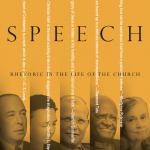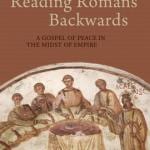Matthew: Interpreted by Early Christian Commentators
Edited and Translated by D. H. Williams
Grand Rapids: Eerdmans, 2018.
Available at Eerdmans
By Laura Thierry
For the uninitiated, entering the world of patristic and medieval Scriptural interpretation can feel a little like being a Muggle who suddenly finds themselves at Hogwarts: Everything is interesting, brilliant, even magical… but also just a little bit too uncomfortably odd. How, then, does a 21st century Christian attempt to work out the systems and mysteries that lie behind and undergird the patristic writings? How do we find our way through the labyrinth of their literal, allegorical, moral, and anagogical interpretations of Scripture? How can we get at their gold and make sense of their curiosities?
Fortunately, D. H. Williams in his Matthew: Interpreted by Early Christian Commentators is here to help. In this seventh volume of the Church’s Bible series, Williams continues the series’ excellent work of bringing the Scriptural writings of the fathers into the life of the Church today: Edited, translated, and arranged as an anthology of early Christian exegesis.
A methodological strength of this series is the way in which it “draws extensively on the ancient commentaries, not only on random comments drawn from theological treatises, sermons or devotional works” (p. x), thus enabling the reader to get a sense of the method of the fathers’ writings, rather than just presenting them with some random, nice, patristic thoughts. Additionally, this method serves to highlight the centrality of the Scriptures for the life of the early Church. As Robert L. Wilken in his preface notes, “In the early Church all discussion of theological topics, of moral issues, and of Christian practices took the biblical text as the starting point.” (p. ix).
But how did the patristic authors understand these biblical texts? Williams sets the stage for his anthology by noting the foundational hermeneutic at work in the early church. That is, the way in which all Scripture was interpreted through the life, death, and resurrection of Christ. As Williams summarizes the position of Irenaus “Without a grasp of the plot that holds the books together…the Bible is as vacuous as a mosaic in which the tiny colored stones have been arbitrarily rearranged without reference to the original design” (p. xv). For the fathers, Scripture can only be read through Christ.
Largely on account of this Christological hermeneutic, Matthew’s Gospel held a special place in the writings of the fathers – bridging the world of the Old Testament Scriptures and that of the Church through the story of Christ. On account of the first gospel’s popularity, the collection and variety of writings and authors in this volume is vast and substantial. Covering East and West from the first century through to the early medieval years, this book’s varieties of Early Christian interpretation is delectably rich.
But perhaps the best way of encouraging you, reader, to use this book as a doorway into the patristic world of Christ-soaked Scriptural interpretation is to invite you, in the words of John Chrysostom, to enter into the ‘Golden City’ of the good news of Jesus in Matthew’s gospel:
“With God’s help we are about to enter a golden city, a city more precious than gold…In Mathew we have an excellent guide, and as we enter through his gate we must give full attention… Let us therefore throw open the gates of our mind, open wide our ears, prepare to enter its doors with fear and trembling, and bow low before the King within.” (1).
Reading Matthew with the fathers reminds us that the story of Christ in Scripture is a golden city to be reveled in with Spirit-directed literal, allegorical, moral, and anagogical delight. And as such I would highly recommend this book to anyone seeking to enter that city.
Laura Thierry is a PhD student at Ridley College












